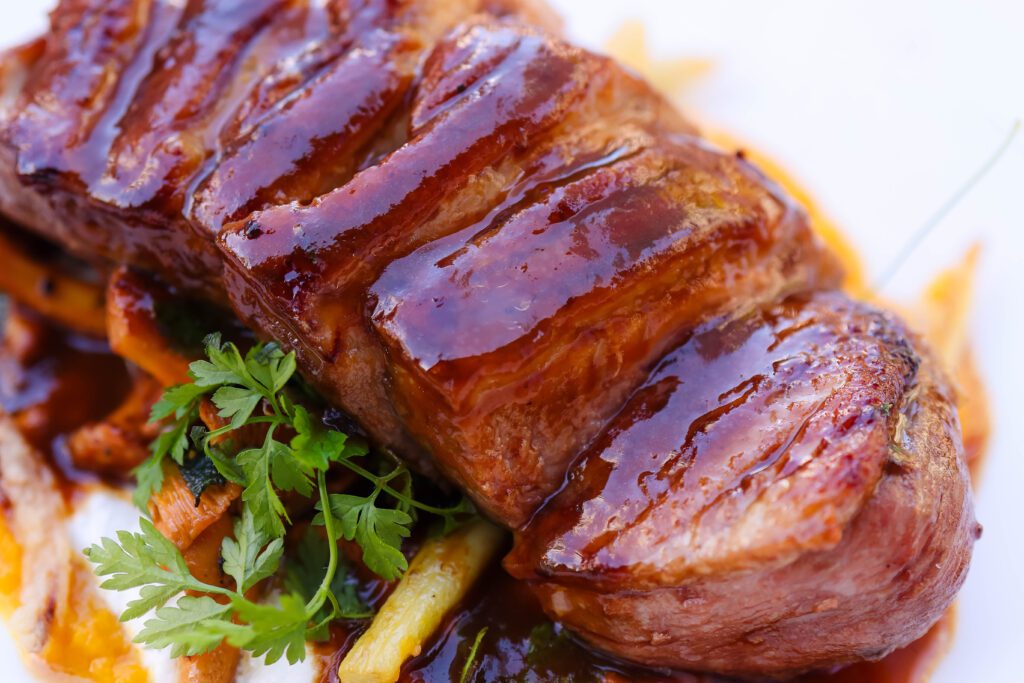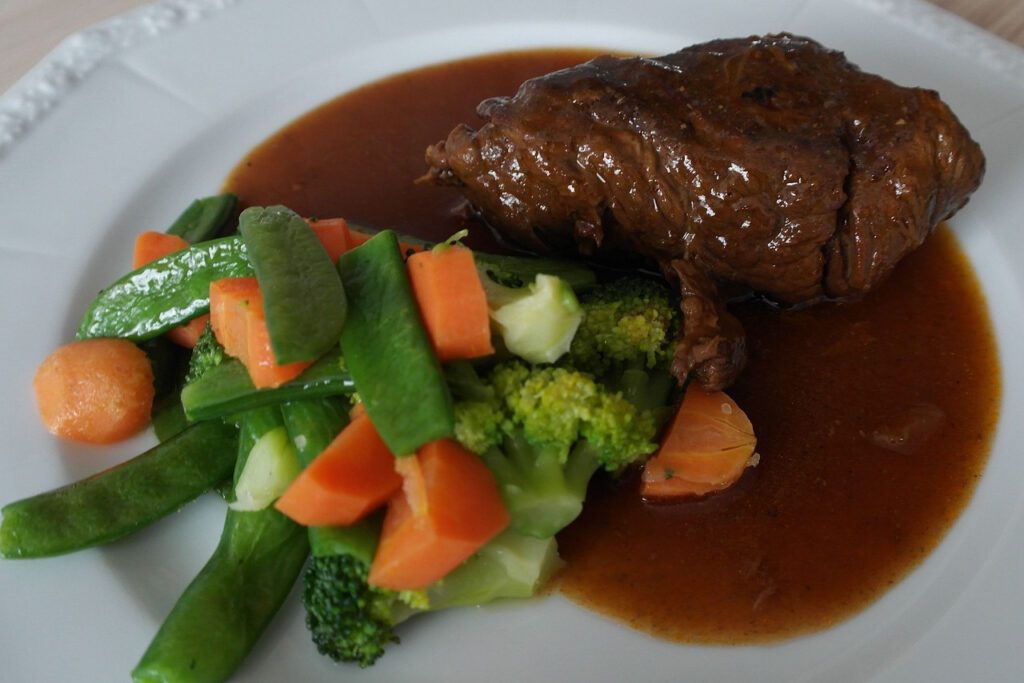Braising Meats: The Secret to Grandma’s Tender and Flavorful Dishes
What is braising meat? Braising meats for Tenderness. Do you recall those blissful visits to grandma’s home, where the kitchen was filled with the most tantalizing smells? That magical pot she had gently bubbling away on the stove that, come dinner, revealed the most succulent meats and veggies you’ve ever tasted? Well, I’m here to let you in on grandma’s secret: Braising! Cook your braising meat in five simple steps – read on.
What is Braising?
Braising, is a slow-cooking method perfect for transforming tougher cuts like shanks, briskets, and rumps into melt-in-your-mouth wonders. This method isn’t just about homey comfort food; it’s also the foundation of gourmet dishes served in the chicest New York or Hollywood eateries.
Why is Braising So Special?
There’s a magic to braising that can’t be beaten. Imagine your home filled with rich, welcoming aromas, drawing everyone to the kitchen in anticipation. And when it’s time to dig in? You’re rewarded with fork-tender meat, bursting with flavors, reminiscent of those cherished dinners at grandma’s.

The Art of Braising: A Step-by-Step Guide
1. Searing is Key:
Before getting into the actual braising, it’s crucial to sear the meat in hot oil. This step accomplishes two things:
- It seals in the meat’s juices, ensuring it remains juicy throughout the cooking process.
- It enhances the dish’s depth of flavor through the caramelization that occurs as the meat browns.
2. Building the Flavor Base:
After browning the meat, remove it and layer the pot with chopped vegetables, often termed as mirepoix. The choice of veggies often complements the meat’s flavor profile. Think carrots, onions, and celery for beef or lamb. Let these veggies sweat a bit, releasing their juices, setting the stage for a rich, flavorful base.
3. Adding Liquids and Spices:
Now, reintroduce the meat to the pot, sprinkle your chosen seasonings, and introduce your liquid. The beauty of braising is its versatility. If you’re going for a classic Southern touch, think pot roast with a mix of beef stock and a splash of Worcestershire sauce. For those aiming for a more Californian flair à la Hollywood, consider lamb shanks with rosemary, garlic, tomatoes, chicken stock, and a good glug of red wine. The goal? Incorporate regional flavors to elevate the authenticity of your dish.
4. Low and Slow is the Way to Go:
Once all ingredients are in, it’s time to let the magic happen. Lower the heat if you’re using a stovetop or transfer the pot to an oven preheated to around 300 degrees (ensure your pot is oven-safe!). Allow the ingredients to meld and harmonize for about 3 hours on the stovetop or 2.5 hours in the oven. What you’ll get is meat that’s impeccably tender, infused with the rich flavors of the liquid and spices.
5. Serving it Right:
When you plate up, don’t forget that liquid gold – the sauce left in the pot. It’s packed with flavors and perfect for drizzling over the meat or mopping up with some crusty bread.

Final Thoughts
Braising, as I’ve come to learn, isn’t just a cooking technique; it’s an experience. It takes you back in time, reminds you of treasured memories, and helps create new ones. So, the next time you’re craving a hearty, flavorful meal, remember grandma’s secret and get braising! Your taste buds (and loved ones) will thank you.
